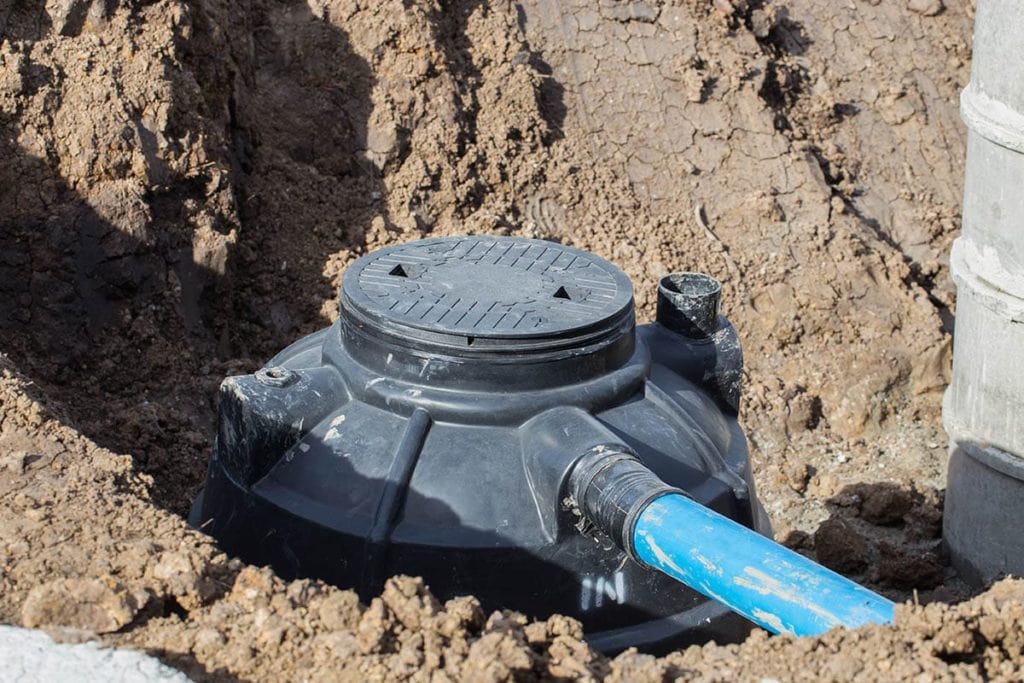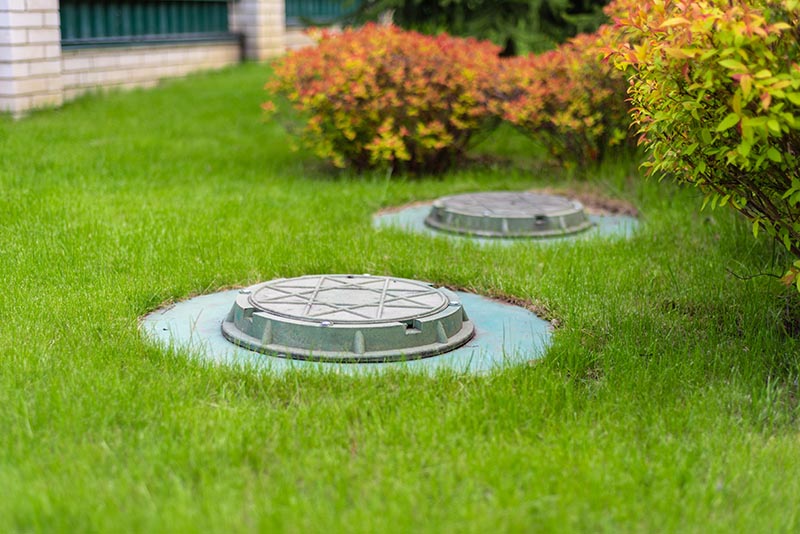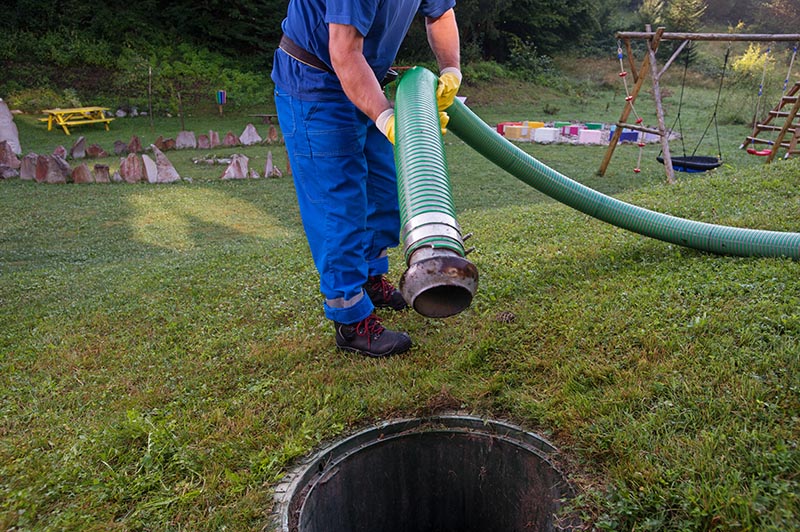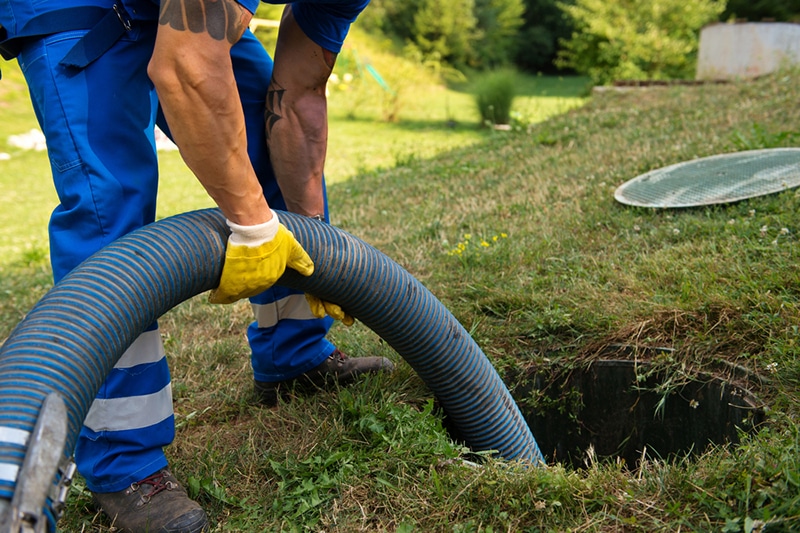Can You Have a Septic Tank Without a Leach Field? What To Know!
-
Jeff Weishaupt
- Last updated:

Ideally, you should not have a septic tank without a leach field. Without a leach field, you’ll have to pump the tank periodically to keep it from overflowing. It will be more expensive in the long run and can lead to soil and groundwater contamination if not done correctly.
To avoid these problems, installing a leach field to disperse the effluent from your septic tank over a large area is best.
How Does a Leach Field Work?
The leach field consists of a series of trenches filled with gravel or crushed stone and perforated pipes that allow the effluent1 to flow out slowly over a large area. The soil in the leach field absorbs the effluent and further purifies it before releasing it into the ground.
Leach fields are designed to be self-cleaning. Thus, they require little maintenance but will need periodic inspections and minor repairs from time to time. The most important thing you can do is to ensure that the field remains free of solids and other debris.
When Can You Have a Septic System Without a Leach Field?

While a leach field is necessary for most septic systems, there are circumstances where they are absent or not needed. Here are some of them:
Older Septic Systems
Septic systems built decades ago often did not include a leach field. Instead, the effluent from the septic tank drains straight into an adjacent body of water, such as a river, stream, or pond.
However, this practice is not allowed today due to health and environmental concerns. If you have an old septic system without a leach field, you’ll need to consult a professional about upgrading it.
Failure of the Percolation Test
A percolation test determines if the soil in your yard is suitable for a leach field. If the test fails, you may be able to install a septic system without a leach field. It normally happens in office buildings and other commercial properties where water needs to be treated on-site, but the soil is not suitable for a leach field.
Lack of Space
Leach fields take up a considerable amount of space. In some cases, such as on small lots or in areas with high water tables, you may not have enough room for one.
However, this is an infrequent situation. The building requirements for a septic system consider factors like topography and land size. Moreover, the code regulations in your area will have strict rules around leach fields.
However, if you’ve inherited an older septic system without a leach field and don’t have the space to put one, you may be able to get an alternative solution.

Nearby Pollution-Sensitive Water Bodies
If your property is near a water body that’s sensitive to pollution, such as a drinking water reservoir, you may not be able to install a leach field. There’s a possibility the wastewater from your field may join the nearby water body.
As a result, even the slightest trace of toxin can render the water dangerous for human and animal consumption. In this case, you will need to install an aerobic septic system that recycles the wastewater.
An aerobic septic system is more expensive and requires regular maintenance. It also needs to be inspected and approved by the local health department before it can be used.
Septic Systems Without a Leach Field
Here are some types of septic systems that do not have a leach field:
Evapotranspiration System
An evapotranspiration (ET) system uses plants to filter and purify wastewater. The system consists of a septic tank, a pump chamber, and an underground filter bed filled with soil and native plants.
The wastewater flows from the septic tank to the pump chamber, where it is pumped up and into the filter bed. The plants then process, filter, and purify the wastewater by using the sun and wind to evaporate the water while absorbing any pollutants it may contain. However, the environment must have sufficient heat and dryness for this system to work.

Mound System
A mound system is an alternative to the traditional leach field. It uses mounds of soil and sand to filter and purify wastewater. The mound is made up of a series of layers, including a bed of sand, gravel, and coarse soil.
As the wastewater passes through the layers, organic and inorganic waste is removed. The water then flows into a collection system which directs it to a storage area for further treatment.
Circulating Sand Filter System
A circulating sand filter system also does not have a leach field. The wastewater flows through the distribution pipes on top of a sand bed. It then flows through the sand, and any solids that are larger than the size of the sand grains are filtered out. The wastewater then flows back to the septic tank, creating a continuous cycle.
Conclusion
A leach field is a must-have in a modern septic system. It is an integral part of the process, ensuring effective wastewater treatment and disposal.
However, in some cases, you may not need a leach field. Alternative systems, such as aerobic systems, can be used to treat wastewater without a leach field. Plus, if you don’t have enough space in the field, you may have to use a septic system without a leach field.
Featured Image Credit: Phattara Away, Shutterstock
Contents

